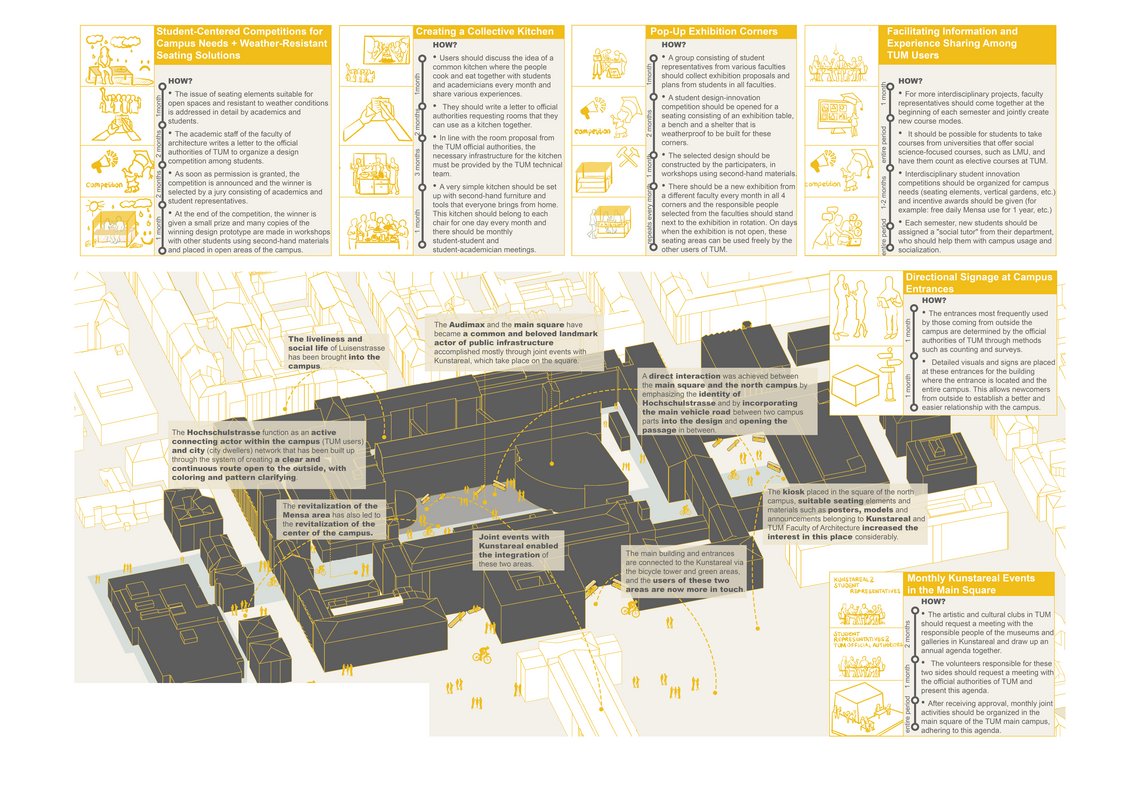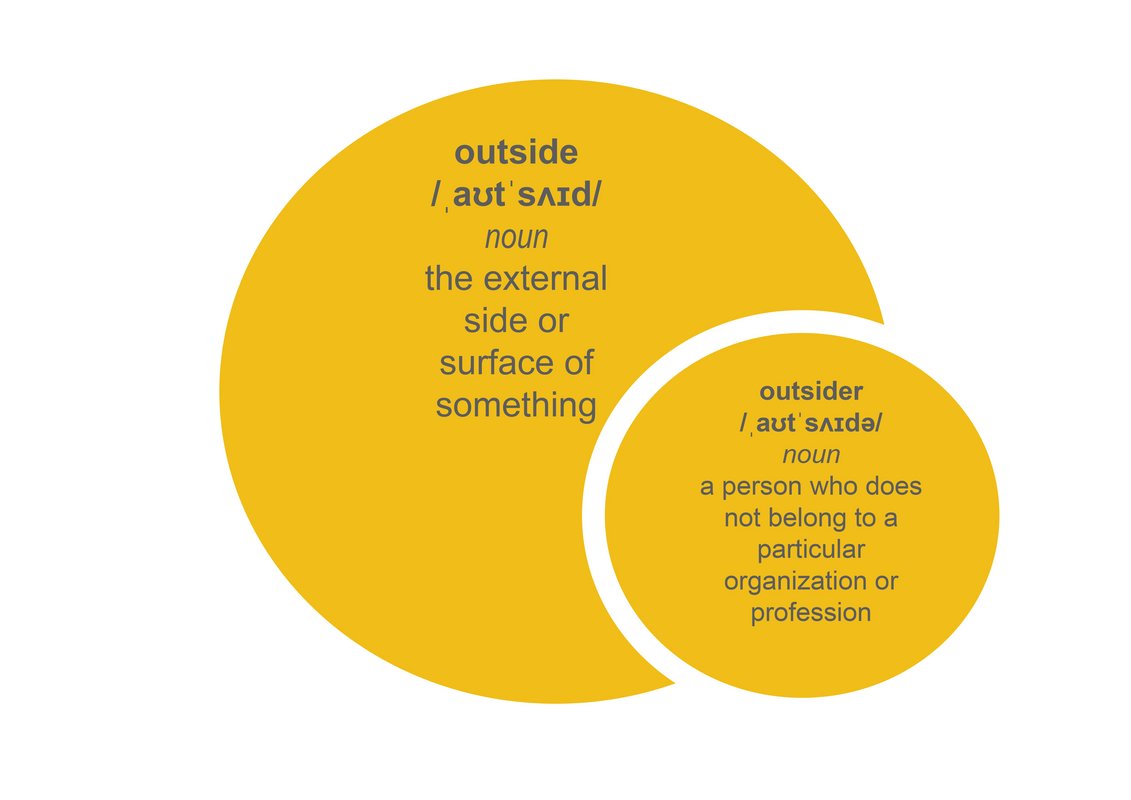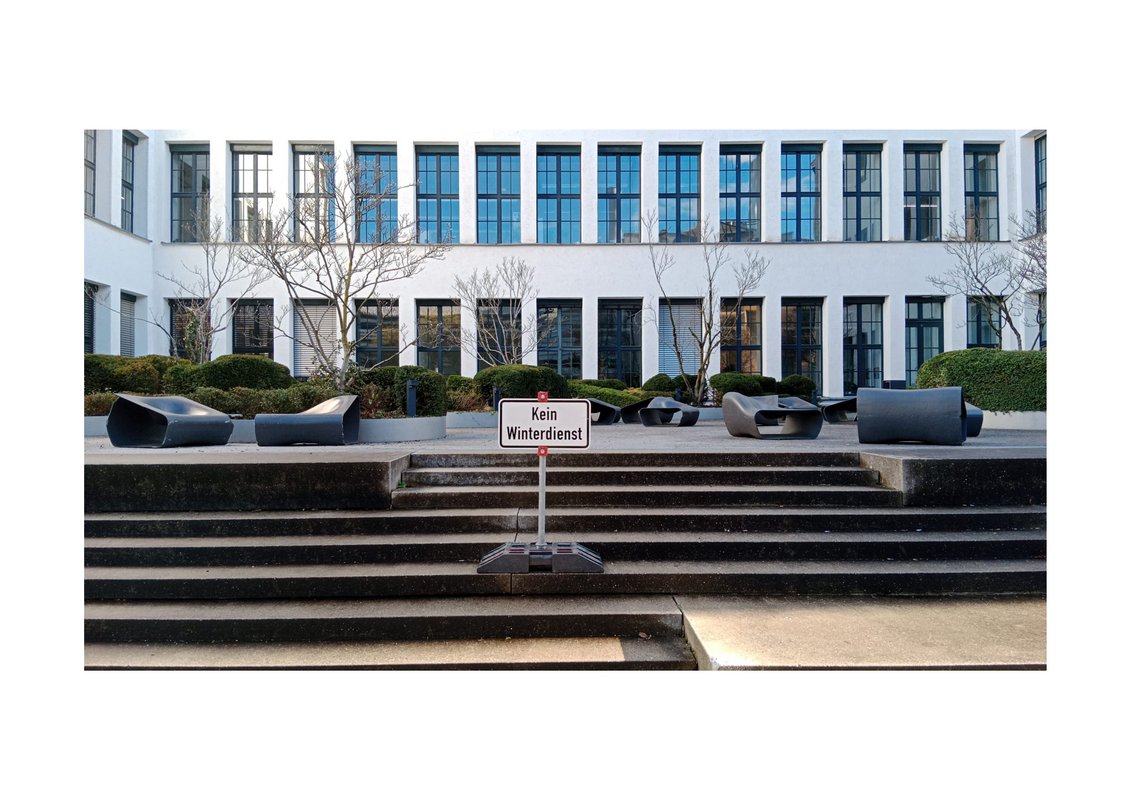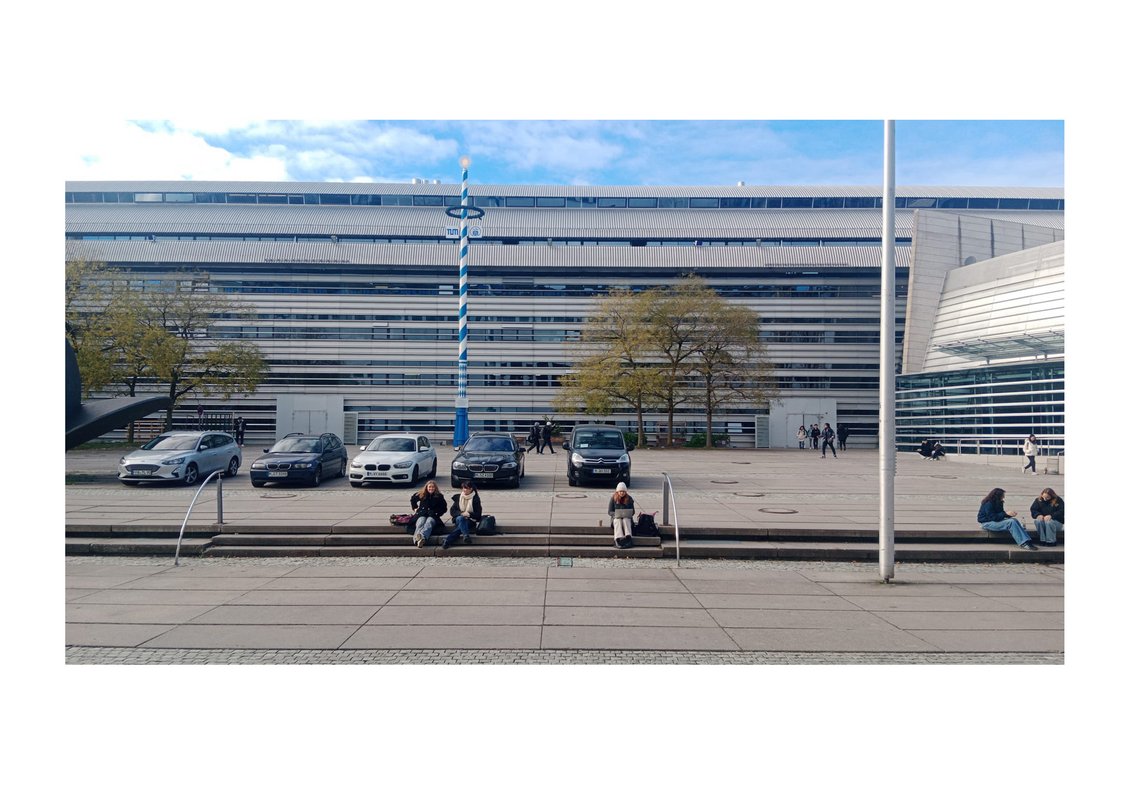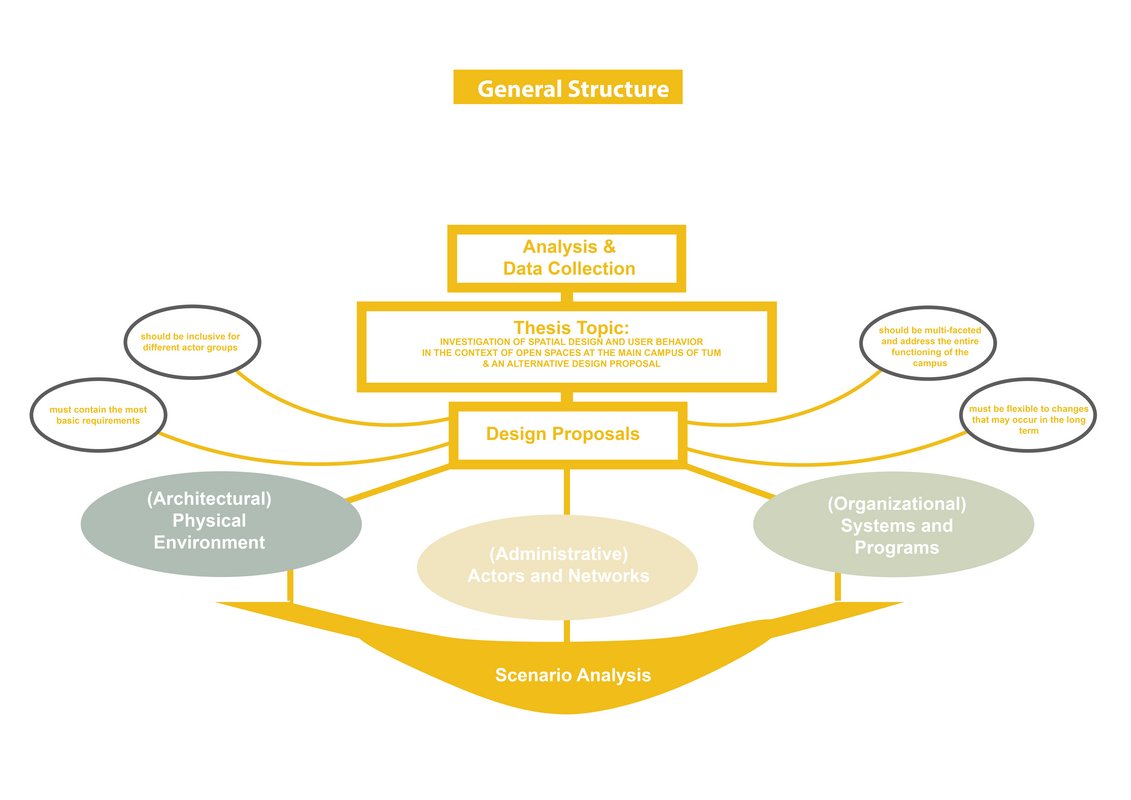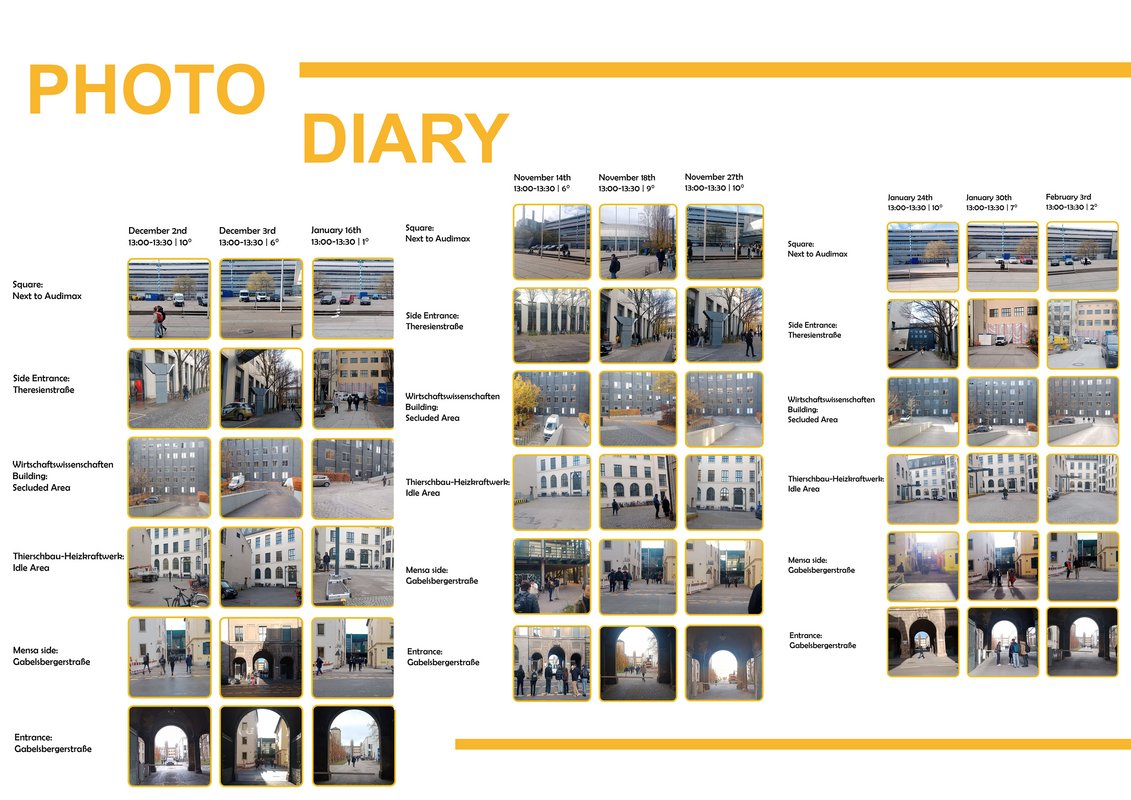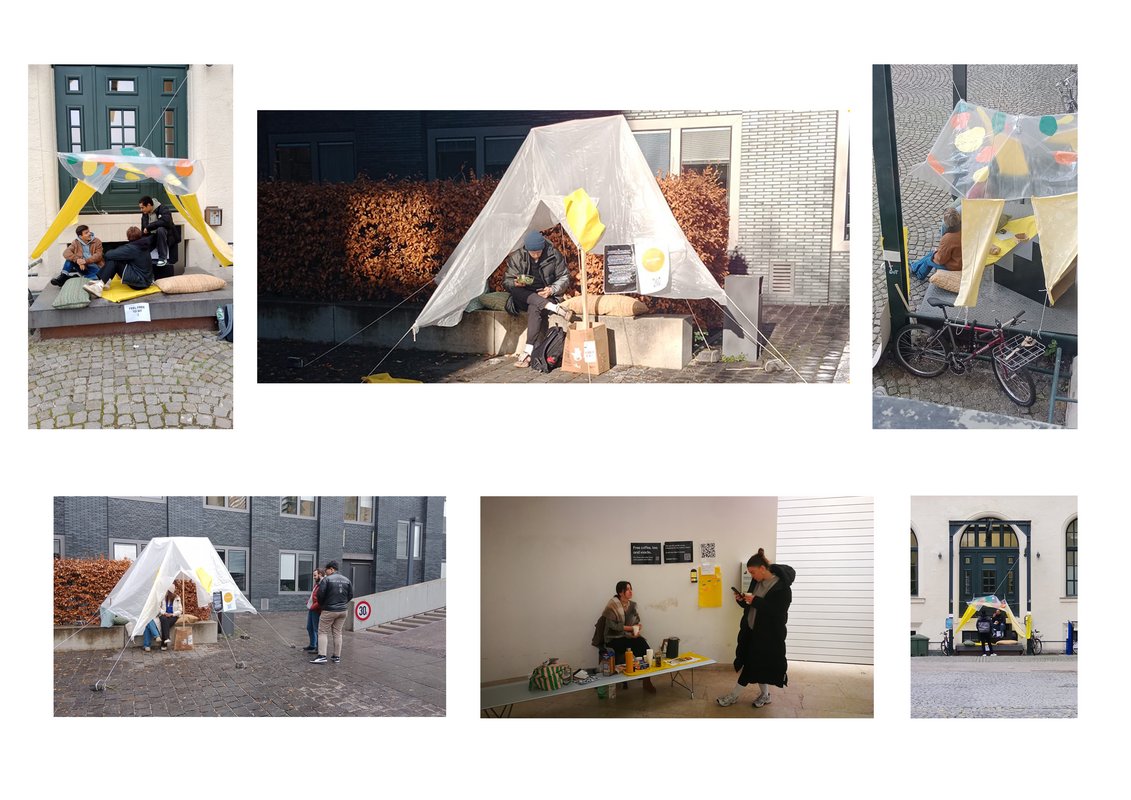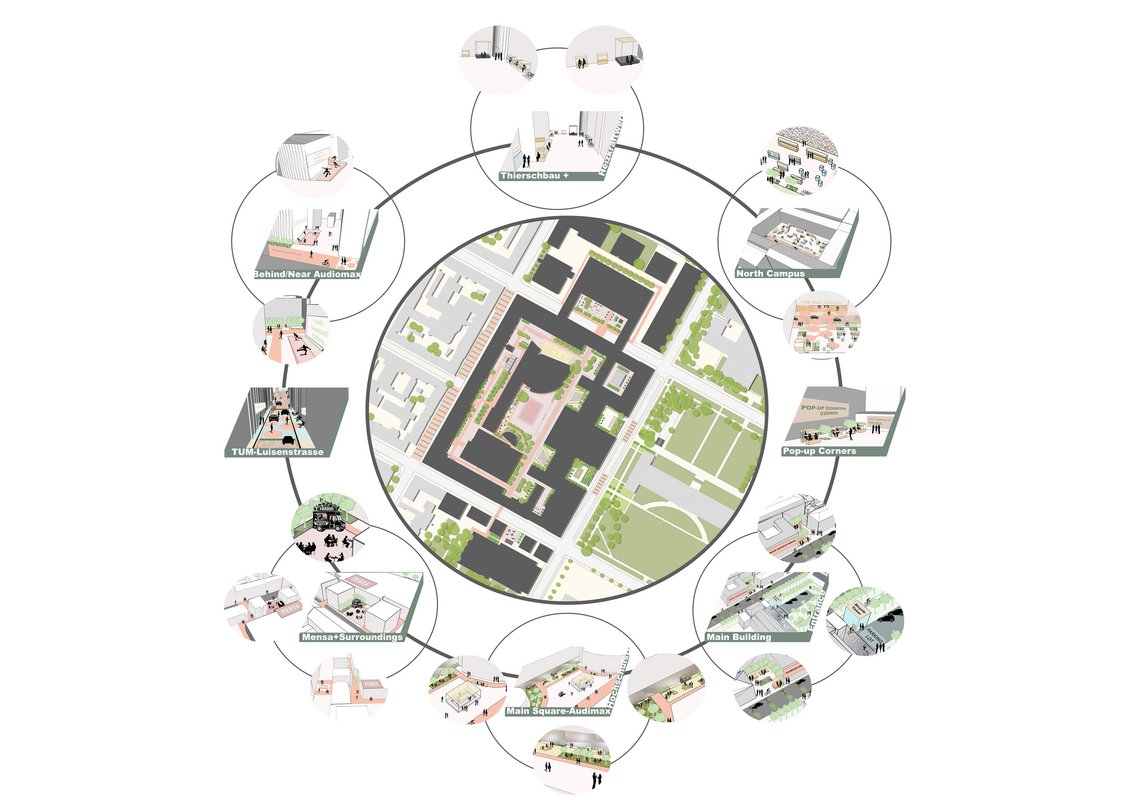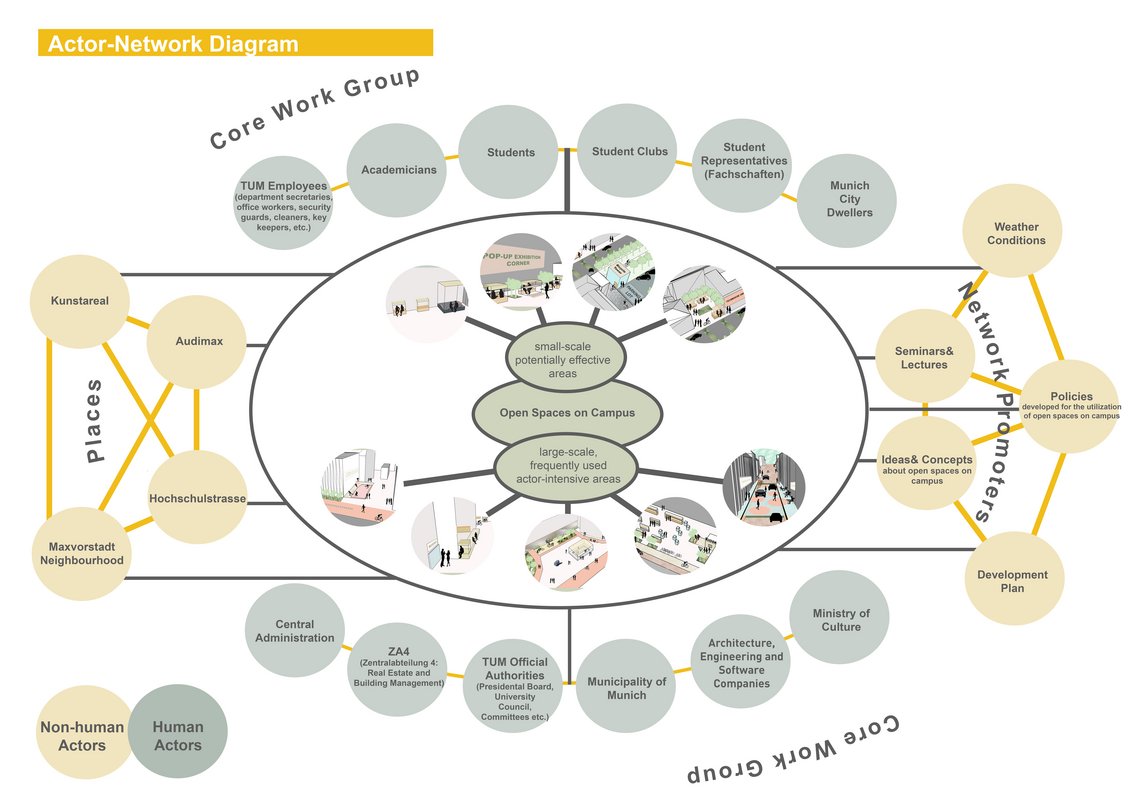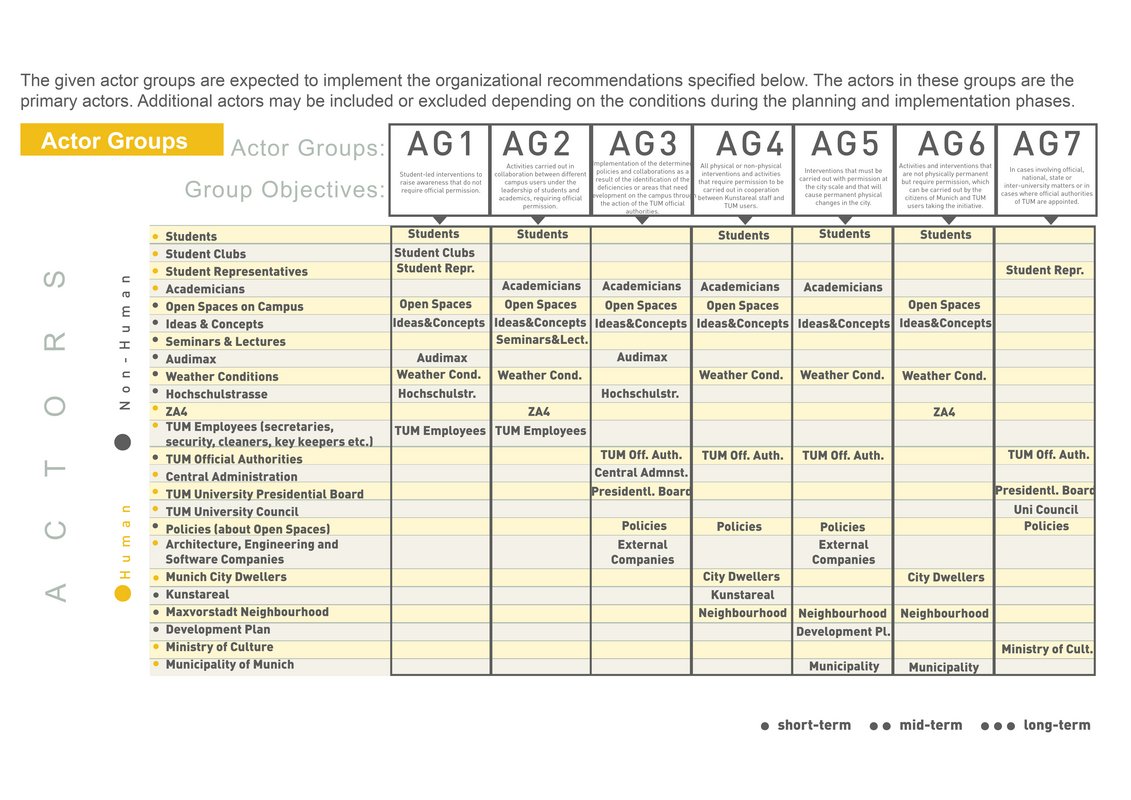Outside[r]
freie Masterthesis (WS24)
Mine Büyükişcan
Investigation Of Spatial Design And User Behavior In The Context Of Open Spaces At The Main Campus Of TUM & An Alternative Design Proposal
The first thing to clarify about this study is that it is not a 'design' project in the traditional sense. As an urban planner aiming to specialize in urban design, one of the most important lessons I have learned through my professional experience is that even the most aesthetically pleasing physical designs fail to communicate effectively with users if they lack proper organizational and administrative support. Therefore, instead of focusing on creating an exceptional physical design, my Master's thesis aimed to demonstrate what can be achieved by enhancing a simple, adequate design through strong organizational and administrative foundations.
In this study, the emphasis extends beyond mere physical observations and designs. Key concepts such as "space, user perception, spatial identity, physical and psychological barriers, placemaking, permeability, openness, and co-production" have been placed at the core of the analysis. A framework was developed through these concepts to guide both the analytical and design processes. These concepts were explored not only from a theoretical standpoint but also in terms of how they are experienced and understood by users.
TUM Main Campus is a place that was designed many years ago. It has reached maximum occupancy in terms of closed volumes, with the addition of many new buildings in place of the buildings demolished after the Second World War and when the recent changes made. Despite this, there are still some open areas that, if well designed, can provide great benefits to users and make their lives easier. Some small open spaces between very large faculty buildings have remained mostly idle, and although past interventions have been made by students and academics from time to time to activate these places, these interventions have generally remained on a temporary level. Despite this, these areas are still very valuable to their users. With holistic planning and a systematic progressive and user-friendly design approach, it can be delivered to the user efficiently in a short time.
Although the main campus of the Technical University of Munich (TUM) features several open spaces, their usage is minimal and restricted. There are significant shortcomings in key areas, such as material selection, orientation, and consideration of weather conditions, all of which are vital to ensuring these spaces are suitable for use. Additionally, there is a cultural issue surrounding the use of open spaces on campus, primarily driven by TUM authorities but also influenced by other users.
Given this, the study explores how spatial design impacts users and, conversely, how users affect the design of these spaces. The open spaces on the TUM Main Campus were assessed in this context. Critical open spaces were identified, and the relationship between these spaces and users was evaluated. The study not only involved a physical examination of space usage but also considered process-oriented and managerial perspectives. Space-actor-network relations were explored, and strategies for activating open spaces, taking into account both physical and social environmental conditions, were discussed.
During the research, on-site observations and communication analyses were conducted, leading to recommendations for improving user interactions and the redesign of the TUM campus. As a result, a comprehensive proposal for physical, social, and administrative redesign was developed for the TUM Main Campus, based on the findings of these analyses.
The uniqueness of this thesis lies in this dual approach. It is not merely a physical design proposal, but a substantial change in physical and organizational design that is feasible and implementable. Additionally, it incorporates managemental change proposals for the operation of the campus, detailing how these changes could be implemented step by step, who would be responsible, and within what timeframe.
I created this study by dreaming of a university campus where all users have equal authority to be active in decision-making processes regarding the open spaces of the campus and where collective work and use are widespread. I hope it will be a source of inspiration for future studies.
